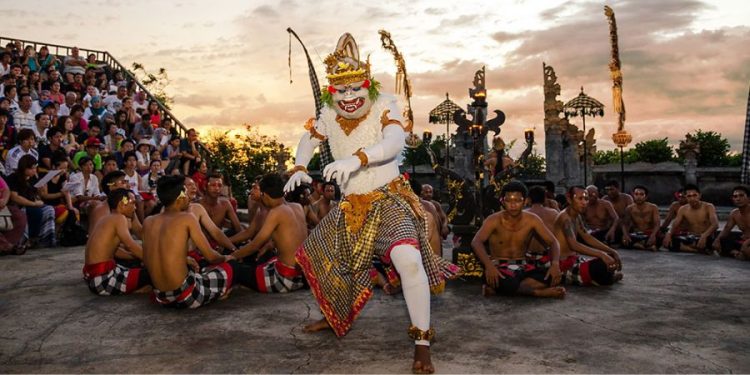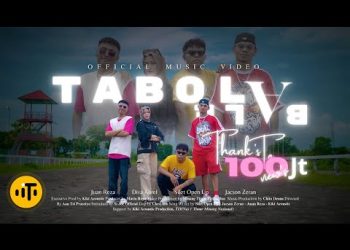Indonesia, an archipelago of more than 17,000 islands, is known for its cultural diversity. Each island, province, and ethnic group contributes to the vibrant cultural identity of the nation. Over the years, this cultural richness has merged with global influences, giving birth to what we now call Indonesian pop culture. Music, film, fashion, digital media, and lifestyle trends have evolved into unique forms that resonate with both local and international audiences.
One of the most powerful drivers of this cultural evolution is the festival. From traditional celebrations deeply rooted in history to modern music and film festivals that attract global attention, festivals in Indonesia have become cultural incubators. They do not merely entertain but also create spaces for cultural exchange, creativity, and identity-building.
This article explores in depth how festivals shape Indonesian pop culture, examining their historical role, modern significance, and future potential.
Historical Background of Festivals in Indonesia
Festivals in Indonesia are not a modern invention. They have existed for centuries, often rooted in rituals, harvest cycles, and religious traditions. Traditional festivals such as Sekaten in Yogyakarta, Bali Arts Festival, and Toraja Funeral Rites were historically designed to bring communities together, celebrate spirituality, and preserve collective memory.
As Indonesia underwent modernization and globalization, these traditional gatherings began to coexist with modern festivals influenced by international pop culture. This shift set the stage for a new kind of cultural expression that blends heritage with contemporary creativity.
The Dual Nature of Indonesian Festivals
Festivals in Indonesia today generally fall into two categories:
- Traditional Festivals
- Rooted in cultural or religious traditions.
- Often feature local music, dances, crafts, and rituals.
- Examples: Galungan in Bali, Grebeg Mulud in Java, Tabuik Festival in West Sumatra.
- Modern Pop Culture Festivals
- Inspired by global music, film, and lifestyle events.
- Attract younger audiences and international visitors.
- Examples: Java Jazz Festival, We The Fest, Jogja-NETPAC Asian Film Festival.
The coexistence of these two types of festivals has created a unique cultural synergy. Traditional festivals continue to ground Indonesians in their heritage, while modern festivals provide platforms for creativity and global connection.
Festivals as Platforms for Music and Entertainment
1. Music Festivals
Music is arguably the most influential driver of Indonesian pop culture. Festivals such as Jakarta International Java Jazz Festival, Soundrenaline, and We The Fest bring together local musicians, international acts, and diverse audiences. These events:
- Showcase Indonesian talent alongside global stars.
- Promote emerging genres, from dangdut koplo remixes to indie rock and EDM.
- Bridge traditional music with modern sounds, as some festivals experiment with gamelan-electronic fusions.
For young Indonesians, attending a music festival is more than entertainment; it’s a lifestyle statement. It influences how they dress, socialize, and even consume digital media, contributing significantly to pop culture.
2. Film Festivals
Indonesian film festivals also play a critical role. The Jakarta International Film Festival (JIFFest), Jogja-NETPAC Asian Film Festival (JAFF), and Bali International Film Festival bring international films to Indonesian screens while highlighting local productions. These festivals help:
- Encourage Indonesian filmmakers to engage with global cinema.
- Create cultural dialogues about identity, politics, and modern life.
- Shape cinematic tastes and encourage the rise of Indonesian film stars in global markets.
Film festivals do not just reflect Indonesian pop culture; they actively construct it by influencing narratives and aesthetics.
Fashion and Lifestyle at Festivals
Festivals are also spaces where fashion and lifestyle trends are born. Young Indonesians often treat festivals as fashion runways. Influencers, celebrities, and everyday attendees use these events to experiment with styles that later spill over into mainstream pop culture.
At events like We The Fest or Java Jazz, it’s common to see hybrid styles: batik mixed with streetwear, hijab fashion fused with Korean aesthetics, or traditional sarongs paired with sneakers. Social media amplifies these looks, spreading them far beyond festival grounds.
In this way, festivals serve as trendsetters, influencing not only how Indonesians present themselves but also how Indonesian fashion is perceived globally.
Social Media Amplification of Festivals
No discussion of pop culture today is complete without mentioning social media. Festivals in Indonesia thrive in the digital ecosystem, where Instagram, TikTok, and YouTube amplify their impact.
- Live streams and vlogs allow audiences who cannot attend physically to experience festivals virtually.
- Festival hashtags create online communities where people share their outfits, experiences, and reviews.
- Viral moments—a celebrity appearance, a stunning stage design, or a unique performance—spread rapidly, embedding the festival into national conversation.
This digital amplification ensures that festivals have a life beyond their actual duration, cementing their role in shaping Indonesian pop culture.
Economic and Cultural Impact of Festivals
Festivals are not just cultural phenomena; they are also economic engines. They drive tourism, hospitality, and creative industries. Cities like Yogyakarta, Jakarta, and Bali use festivals to position themselves as cultural hubs.
- Local artisans gain exposure through craft fairs at festivals.
- Small businesses benefit from increased foot traffic and online exposure.
- Tourism boards use festivals as branding tools to attract international visitors.
At the same time, festivals strengthen cultural pride and preserve traditions. For example, Bali Arts Festival combines ritual performance with tourism, ensuring cultural sustainability while fueling the local economy.
The Role of Festivals in Identity Formation
Festivals are crucial in shaping youth identity in Indonesia. For many young people, attending a festival is an initiation into contemporary culture. It is where they:
- Discover new music and art forms.
- Connect with communities who share their interests.
- Assert individuality through fashion and lifestyle choices.
Moreover, festivals allow Indonesians to negotiate between tradition and modernity. For instance, a young attendee might enjoy a DJ set at We The Fest while wearing a batik-inspired outfit, symbolizing how pop culture in Indonesia blends the global and the local.
Case Studies of Iconic Festivals
1. Java Jazz Festival
- One of the largest jazz festivals in the world.
- Attracts international stars like Stevie Wonder and local talents like Tulus.
- Shapes Indonesian pop culture by making jazz accessible and trendy.
2. We The Fest
- A youth-oriented music festival that blends international acts with local performers.
- Known for fashion-forward attendees and social media virality.
- Acts as a melting pot of Indonesian and global youth culture.
3. Bali Arts Festival
- Showcases Balinese traditional performance and crafts.
- Attracts tourists while preserving local heritage.
- Illustrates how festivals balance cultural preservation with pop culture relevance.
4. Jogja-NETPAC Asian Film Festival (JAFF)
- Celebrates Asian cinema while supporting Indonesian filmmakers.
- Encourages discussions about cultural identity and representation.
- Expands the scope of Indonesian pop culture into global cinematic conversations.
Challenges Facing Indonesian Festivals
Despite their success, festivals face several challenges:
- Commercialization – Risk of prioritizing profit over cultural value.
- Accessibility – High ticket prices exclude lower-income groups.
- Environmental impact – Large festivals generate waste and carbon footprints.
- Cultural dilution – Traditional elements risk being overshadowed by global trends.
Addressing these issues is crucial to ensuring festivals remain sustainable cultural drivers.
The Future of Festivals in Indonesian Pop Culture
Looking ahead, festivals in Indonesia are likely to evolve in several ways:
- Hybrid Formats: Combining physical and digital experiences through livestreams and VR.
- Sustainability Focus: Eco-friendly practices like banning single-use plastics and promoting local sourcing.
- Inclusivity: Making festivals accessible to diverse communities, including marginalized groups.
- Global Integration: More collaborations with international artists and platforms, positioning Indonesia as a cultural hub in Asia.
As long as they adapt, festivals will continue to be powerhouses of Indonesian pop culture, shaping music, fashion, film, and lifestyle trends.
Regional Diversity of Indonesian Festivals
One of the reasons festivals have such a profound impact on Indonesian pop culture is the sheer regional diversity across the archipelago. Each island contributes a distinct cultural rhythm that, when celebrated in festivals, enriches national identity.
- Java: Known for its blend of traditional rituals and modern creativity. Events in Yogyakarta and Jakarta often fuse gamelan music with pop and electronic sounds, creating a new hybrid of entertainment.
- Bali: Famous for the Bali Arts Festival, which has become an international showcase for Balinese performance arts, painting, and traditional attire. This island positions itself as a cultural bridge between Indonesia and the world.
- Sumatra: Hosts unique festivals like Tabuik in Pariaman, which combines Islamic traditions with local practices. These events highlight how Indonesian pop culture incorporates diverse religious influences.
- Kalimantan and Sulawesi: Festivals in these regions showcase indigenous traditions, dances, and rituals that influence Indonesian visual arts, crafts, and performance styles.
- Papua: With events like the Lake Sentani Festival, Papua contributes music, body art, and dance styles that are increasingly referenced in fashion and popular performance.
By representing local identities on a national stage, festivals strengthen the mosaic of Indonesian pop culture and prevent cultural homogenization.
The Role of Digital Technology in Expanding Festivals
Digital technology has revolutionized the way festivals operate and influence pop culture. The rise of smartphones, streaming platforms, and social media has ensured that festivals reach far beyond physical attendees.
- Online Ticketing and Virtual Events
Platforms allow broader access, reducing geographical barriers. For example, during the pandemic, some festivals livestreamed performances, making them accessible worldwide. - Augmented Reality (AR) and Virtual Reality (VR)
New technologies are being experimented with to create immersive experiences. Imagine attending a Balinese dance virtually while interacting with digital elements. - Digital Collaboration
Musicians and artists use digital platforms to collaborate across regions and even continents. Festivals often debut such projects, pushing the boundaries of Indonesian pop culture. - Big Data and Audience Analytics
Organizers now analyze online behavior to curate lineups and themes. This responsiveness ensures festivals remain relevant to youth culture trends.
Technology doesn’t just amplify festivals; it transforms them into globalized cultural experiences.
Festivals as Tools of Soft Power and Global Recognition
Indonesia has increasingly used festivals as instruments of soft power—a way of influencing global perception through culture rather than politics or economics.
- Tourism Promotion: Events like Bali Arts Festival attract international visitors, reinforcing Indonesia’s image as a cultural paradise.
- Cultural Diplomacy: Through music and film festivals, Indonesian artists collaborate with global creators, subtly promoting the nation’s cultural richness abroad.
- Brand Indonesia: Just as South Korea used K-pop concerts and festivals to boost its global influence, Indonesia can leverage its festivals to establish a strong cultural brand.
By positioning festivals as both entertainment and diplomacy, Indonesia enhances its global standing and ensures its pop culture resonates internationally.
Comparisons with Other Asian Countries
To understand the unique role of Indonesian festivals, it is helpful to compare them with those in neighboring Asian countries.
- Japan: Known for highly commercialized pop culture festivals like Anime Expo and J-Pop concerts. Indonesia’s festivals differ by blending modernity with strong local traditions.
- South Korea: K-pop concerts dominate youth culture, supported by state investment. Indonesian festivals are more grassroots-driven, often supported by local communities.
- Thailand: Festivals like Songkran are heavily tradition-based, while Indonesia has successfully merged tradition and global pop culture in events like We The Fest.
- Philippines: Music and film festivals thrive, but Indonesia’s diversity gives it a broader spectrum of cultural outputs.
This comparison highlights Indonesia’s unique position: it does not simply replicate global models but creates hybrid cultural festivals that reflect its multiethnic society.
Conclusion
Festivals in Indonesia are far more than entertainment events. They are cultural laboratories where tradition meets modernity, local creativity interacts with global influences, and identity is continuously negotiated. From music and film to fashion and lifestyle, festivals act as trendsetters, amplifiers, and preservers of culture.
Their role in shaping Indonesian pop culture cannot be overstated. They influence how young Indonesians express themselves, how the world perceives Indonesia, and how cultural heritage evolves in the 21st century.
As Indonesia continues to navigate globalization, festivals will remain at the forefront—bridging past and present, local and global, tradition and innovation.






